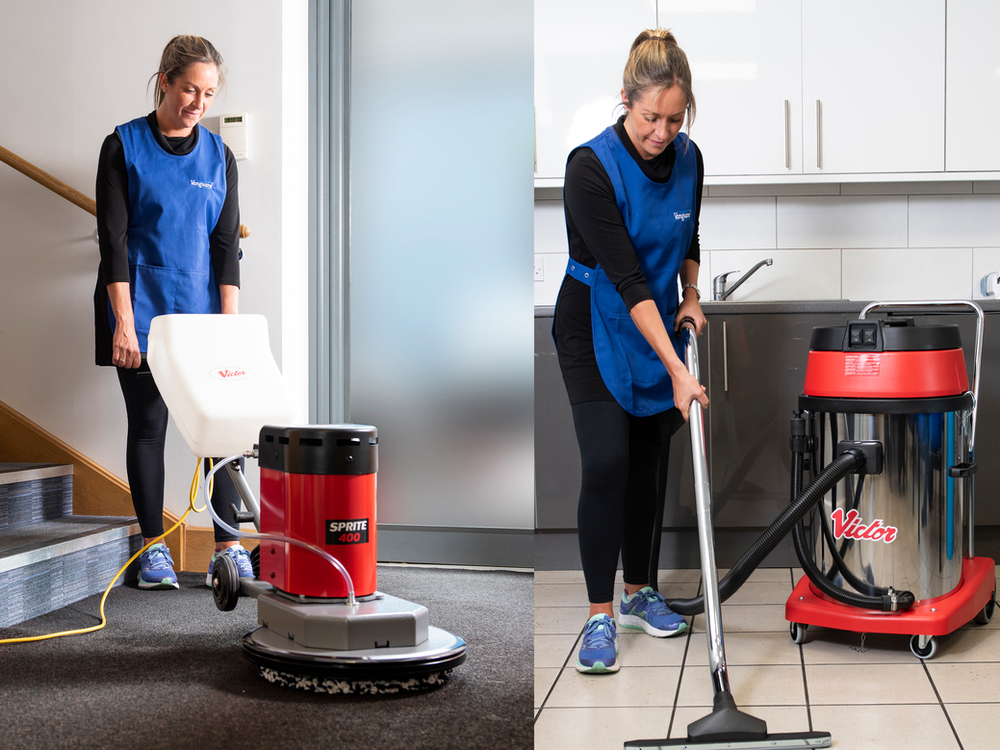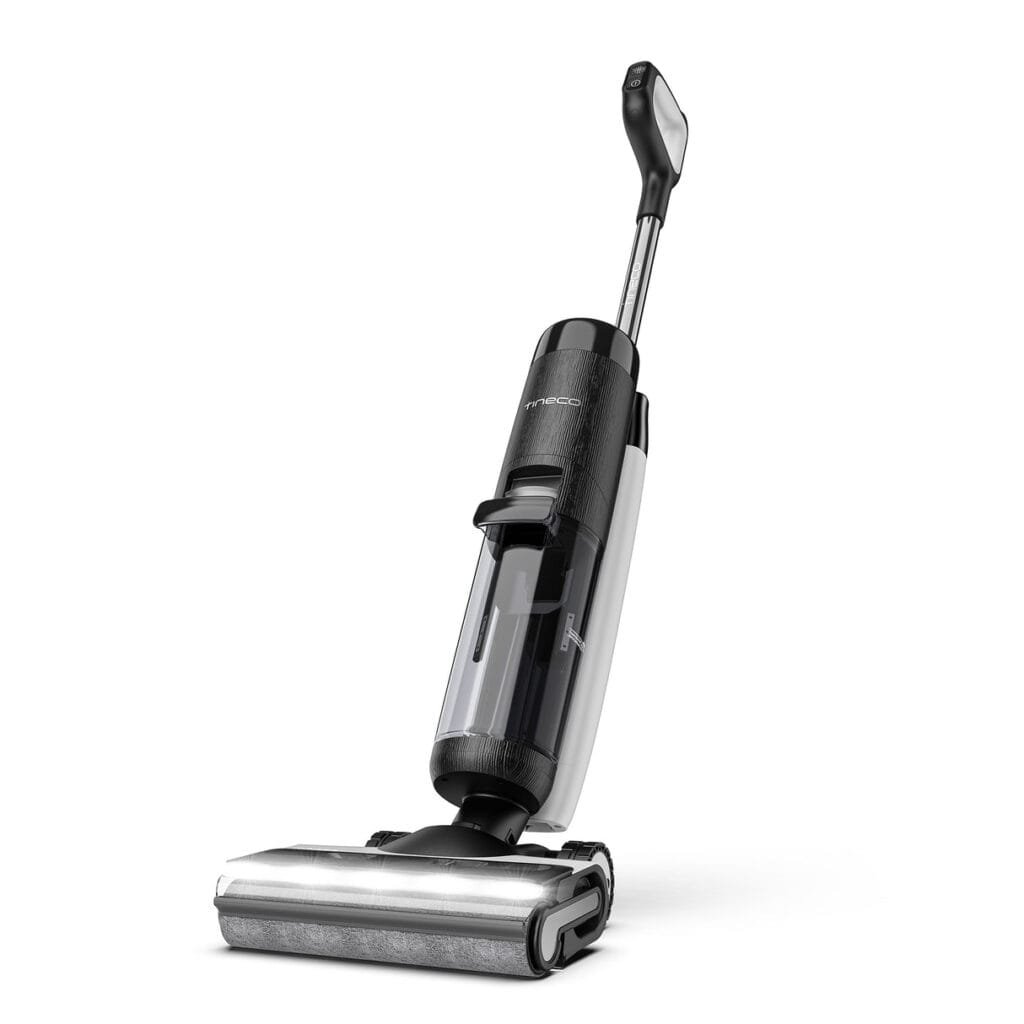Are you confused about whether to choose a wet or dry vacuum cleaner for your cleaning needs? You’re not alone.
Picking the right vacuum can save you time, effort, and even money. Knowing the difference between wet and dry vacuum cleaners will help you clean smarter, not harder. You’ll discover how each type works, which messes they handle best, and which one fits perfectly into your home or workspace.
Keep reading—you’re about to make cleaning easier than ever before.
Wet Vacuum Cleaner Basics
Understanding the basics of a wet vacuum cleaner can help you decide if it fits your cleaning needs. Unlike regular vacuums, wet vacuums handle both liquid spills and dry debris. This makes them a versatile tool for many messy situations around your home or workspace.
How Wet Vacuums Work
Wet vacuums use a powerful motor to create suction, just like dry vacuums. The key difference is the tank design that collects liquids safely without damaging the machine. Inside, a filter or water trap prevents water from reaching the motor.
When you switch on a wet vacuum, it pulls in water, dirt, and debris together. This suction capability lets you clean up spills, flooded areas, or wet messes quickly. Have you ever struggled to clean spilled drinks with a regular vacuum? A wet vacuum solves that problem instantly.
Common Uses For Wet Vacuums
Wet vacuums are great for cleaning up liquid spills in kitchens, garages, or workshops. They also work well for sucking up muddy footprints or pet accidents. Many people use them to unclog flooded basements after heavy rain.
Beyond spills, wet vacuums help with deep cleaning carpets and upholstery by extracting water during shampooing. If you maintain a pool or fish tank, a wet vacuum can simplify water changes and cleanup tasks. Can you think of other tricky spots in your home where water cleanup is a challenge?
Advantages Of Wet Vacuum Cleaners
One major advantage is their ability to clean both wet and dry messes, saving you from buying multiple machines. They usually come with strong suction power and large tanks, which means fewer stops to empty them during big jobs.
Wet vacuums also protect your floors and furniture from water damage by removing moisture quickly. If you’ve ever waited days for a carpet to dry, you know how valuable this feature can be. Plus, many models include attachments that make cleaning corners and tight spaces easier.

Credit: commercialcleaningdepot.com
Dry Vacuum Cleaner Basics
Dry vacuum cleaners are common tools for cleaning homes and offices. They use suction to pick up dirt, dust, and small debris from floors and carpets. These vacuums work without using water or liquids. They are simple to use and maintain.
Understanding how dry vacuum cleaners work helps you choose the right one. This section explains their basic functions, common uses, and main benefits.
How Dry Vacuums Work
Dry vacuums create suction with a motor and fan system. Air flows through the vacuum, pulling dirt into a dust bag or container. Filters trap fine particles to keep the air clean. The vacuum releases clean air back into the room. No water is involved in this process.
Common Uses For Dry Vacuums
Dry vacuums clean dust, crumbs, pet hair, and small debris. They work well on carpets, hardwood floors, and tiles. Many people use them for quick daily cleaning. They are also useful for cleaning furniture and car interiors. Dry vacuums handle solid messes only, not liquids.
Advantages Of Dry Vacuum Cleaners
Dry vacuums are lightweight and easy to carry. They need little maintenance and no water refills. These vacuums dry quickly after use. They are often quieter than wet vacuums. Dry vacuums are affordable and widely available. They offer a simple cleaning solution for many households.
Key Differences Between Wet And Dry Vacuums
Wet and dry vacuum cleaners serve different purposes. Knowing their key differences helps you choose the right one. This section breaks down their main distinctions clearly.
Design And Functionality
Wet vacuums have special seals to hold liquids safely. Their motors are protected against water damage. Dry vacuums are lighter and made only for dust and dirt. They use filters designed for dry particles. Wet vacuums often come with larger tanks for holding water and debris.
Cleaning Capabilities
Dry vacuums clean dust, dirt, and small debris from floors and carpets. Wet vacuums pick up liquid spills and wet messes easily. Some wet vacuums can also handle dry debris. Dry vacuums cannot handle wet materials without damage.
Maintenance Requirements
Wet vacuums need regular emptying of liquid tanks. Their filters require cleaning to avoid mold. Dry vacuums need filter changes and dust bag replacements. Using a dry vacuum on wet messes can cause motor failure. Proper care extends the life of both types.

Credit: store.tineco.com
Choosing The Right Vacuum For Your Needs
Choosing the right vacuum cleaner depends on many factors. Knowing your needs helps pick the best model. Both wet and dry vacuum cleaners have unique uses. Understanding these will save time and effort.
Home Vs. Commercial Use
Home vacuums are smaller and lighter. They clean dirt, dust, and small spills. Commercial vacuums are stronger and bigger. They handle heavy dirt and wet messes well. Choose based on how often and what you clean.
Surface Types And Cleaning Tasks
Dry vacuums work well on carpets and hard floors. Wet vacuums clean liquid spills, mud, and heavy dirt. Some models do both jobs. Think about the surfaces and messes you face daily.
Budget Considerations
Dry vacuums usually cost less. Wet vacuums are pricier due to extra features. Balance cost with your cleaning needs. A good vacuum lasts longer and cleans better.
Safety Tips For Using Wet And Dry Vacuums
Using wet and dry vacuum cleaners requires care to keep you and your home safe. These machines handle both water and dust, which can cause risks if not used right. Follow simple safety tips to avoid accidents and damage. Learn how to handle liquids, protect against electrical hazards, and store your vacuum properly.
Handling Liquids Safely
Always check if the vacuum is designed for wet use. Do not vacuum flammable or toxic liquids. Pour liquids carefully into the vacuum’s tank to prevent spills. Empty the tank after each use to avoid mold and bad smells. Avoid sucking water near electrical sockets or appliances.
Electrical Safety Precautions
Unplug the vacuum before cleaning or changing parts. Use a grounded outlet to reduce shock risk. Do not use the vacuum if the cord is damaged. Keep the cord away from wet areas during use. Avoid pulling the vacuum by the cord to prevent damage.
Proper Storage And Care
Empty and clean the vacuum after every use. Store it in a dry place, away from direct sunlight. Check and clean filters regularly to keep the vacuum working well. Coil the cord loosely to avoid kinks. Keep all parts and accessories organized for easy use next time.

Credit: www.victorfloorcare.com
Frequently Asked Questions
What Is A Wet Vacuum Cleaner Used For?
A wet vacuum cleaner is designed to clean liquids, spills, and damp debris. It can handle water and wet messes efficiently. This makes it ideal for garages, basements, and places prone to moisture. It also removes dirt mixed with liquids easily.
How Does A Dry Vacuum Cleaner Work?
A dry vacuum cleaner uses suction to collect dust, dirt, and dry debris. It is best suited for carpets, floors, and upholstery. Dry vacuums use filters and bags to trap particles, ensuring cleaner air and surfaces without handling any liquids.
Can Wet And Dry Vacuum Cleaners Be Used Interchangeably?
Wet and dry vacuum cleaners are generally not interchangeable. Wet vacuums can handle liquids, but dry vacuums cannot safely pick up wet messes. Using a dry vacuum on liquids can damage the machine and cause electrical hazards.
Which Vacuum Cleaner Is Better For Home Use?
For regular home cleaning, a dry vacuum cleaner is usually better. It efficiently cleans dust, pet hair, and dirt on most surfaces. Wet vacuum cleaners are recommended for specific needs like spills or wet areas.
Conclusion
Wet and dry vacuum cleaners serve different cleaning needs. Wet vacuums handle liquids and spills easily. Dry vacuums work best for dust and dirt. Choosing the right type saves time and effort. Think about where and what you clean most.
Both types can keep your space tidy. A good vacuum makes cleaning less of a chore. Now, you can decide which fits your home better. Simple tools, better results.





